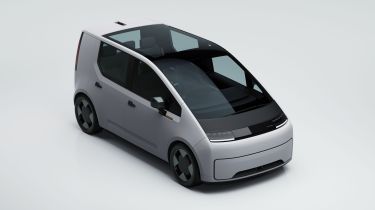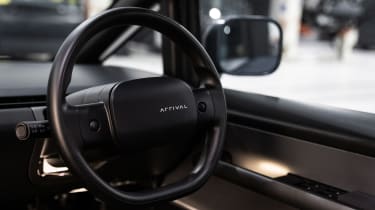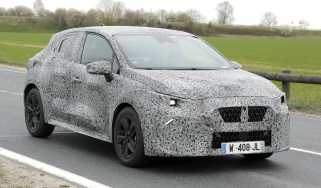New Arrival Car unveiled as purpose-built ride-hailing EV for Uber
Arrival has worked closely with Uber drivers to design an affordable electric hatchback that suits the needs of the modern taxi driver
British EV manufacturer Arrival has offered an early look at its first electric car. It’s called simply the “Arrival Car”, and has been designed to meet the specific needs of ride-hailing drivers, following an intensive six-month consultation with Uber.
The first prototypes will hit UK roads early next year and, once it enters series production, the Arrival Car will form a key part of Uber’s ambition to go fully electric in London by 2025. Arrival has also previously hinted that its car will go on sale in late 2023.
Arrival recently made waves in the pure-electric commercial vehicle segment with the launch of the space-age-looking Arrival Van. It’s based on a modular electric platform that’s covered with bolt-on, damage-resistant composite plastic panels.
The British firm says this particular manufacturing method makes its vans quick to assemble and easy to repair. Arrival is also adamant that the system will make its vehicles cheaper to buy than its competitors, so the same methods have been transferred onto the Arrival Car.
Rather than focussing on outright size, though, Arrival has tried to maximise the Car’s packaging. It occupies a similar footprint to the Volkswagen Golf, but the interior is far more spacious. The rear, for example, has twice as much legroom as a conventional family hatchback.
The driver’s seating position has been raised up and towards the windscreen, with the aim of providing better visibility, while the narrow-but-tall boot provides enough space for a pair of large suitcases to be stored upright – perfect for airport runs, says Arrival.
The Arrival Car’s cabin design also follows the same minimalist brief as the Van, with similar herringbone seat covers and an uncluttered dashboard with a single screen mounted in its centre. The unit displays everything from the car’s range and speed to sat-nav functions and media, while Uber’s app can even be integrated into the system.
Arrival says its priorities for the Car were comfort, safety and cost. The firm also put a heavy focus on maximising the amount of time the EV spends on the road, as ride-hailing drivers cover an average of between 28,000 and 31,000 miles a year.
That’s compared with an average mileage of 6,000 miles a year for a privately operated car. As a result, Arrival expended plenty of energy on maximising the Car’s range, as an electric vehicle that needs constant charging could be a drawback.
Arrival hasn’t yet confirmed any information about what will power the Car, but the brand’s product chief, Patrick Bion, recently told Auto Express that the company’s technology would be modular, and that it’ll be shared across the firm’s entire line-up for the sake of efficiency.
Following the launch of the Arrival Van, he said: “A lot of our technologies are used across all of our vehicles – big van, small van, bus, truck, car, whatever it might be. We’ll have a number of products coming out in the next few years.
“We’re here to address electric vehicle adoption wherever we need to. Everything we do – it’s not about being a van producer or a bus producer – is about solving the scalability of a product; it’s about solving the assembly process and the cost of the user experience. And we’ll apply that to whatever products we think we need to.”
The Van is fitted with a 201bhp electric motor, which sends drive to the front wheels via a two-speed automatic gearbox. More powerful dual-motor options are also available, but there may not be enough space in the Car’s chassis for the extra motor on the rear axle, due to its tight packaging constraints.
Arrival has already developed suitably sized batteries for use in the Car. The Van’s modular battery pack, for example, comes in either 67kWh or 89kWh form, both of which should be able to fit between the axles of the Car’s hatchback body.
Tom Elvidge, Arrival’s platform chief, said: “This is a key milestone for Arrival and we’re thrilled today to be releasing the first look at the Arrival Car. Over the past six months, we have been working closely with Uber’s drivers to create a vehicle specifically for the ride hailing industry, and making it affordable, durable and great to look at.
“Electrifying ride-hailing will play a crucial role in reducing the emissions of vehicles in cities globally, providing a sustainable, clean multi-modal transportation system for communities.
“We are keen on supporting drivers with this transition by developing the best possible product for ride hailing that elevates the experience for both them and their passengers, making urban air clean in the process.”
Arrival expects it’ll have plenty of drivers to support. The brand says that there are around 30 million drivers employed in the ride-hailing sector, 3-4 million of which work with Uber. However, Arrival hasn’t yet clarified whether the Car will be available to ride-hailing drivers from outside of Uber.
Now read our run-down of the best electric cars on sale…
Find a car with the experts






